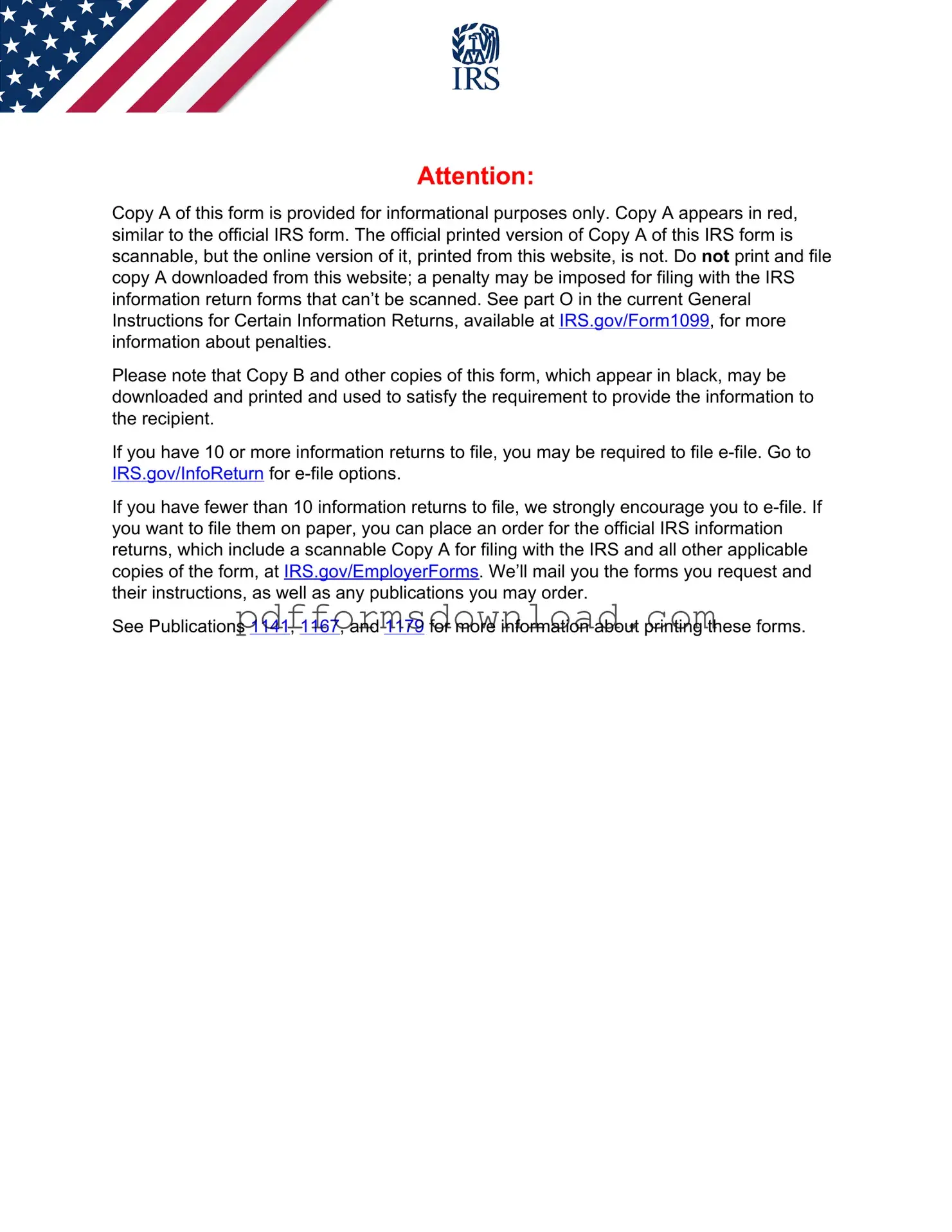What is the IRS 1099-MISC form?
The IRS 1099-MISC form is used to report various types of income that are not classified as wages, salaries, or tips. This includes payments made to independent contractors, rent payments, and certain other types of income. It helps the IRS track income earned by individuals and businesses that may not be subject to traditional payroll tax withholding.
Who needs to file a 1099-MISC?
If you have paid an independent contractor or freelancer $600 or more in a tax year for services provided, you are required to file a 1099-MISC. Additionally, if you made certain types of payments, such as rent or prizes, you may also need to issue this form. Always ensure to check the specific requirements for the type of payment made.
When is the 1099-MISC form due?
The 1099-MISC form is typically due to the IRS by January 31 of the year following the tax year in which the payments were made. If you are filing electronically, the deadline may vary slightly, so it is important to confirm the specific due dates each year. Recipients should also receive their copies by this date.
What information is required on the 1099-MISC form?
The form requires the payer's information, including name, address, and taxpayer identification number (TIN). It also requires the recipient's information, including their name, address, and TIN. Additionally, you must report the total amount paid in the appropriate boxes based on the type of payment made.
What happens if I fail to file a 1099-MISC?
Failure to file a 1099-MISC can result in penalties from the IRS. The penalties vary based on how late the form is filed and whether you intentionally disregarded the requirement. It is advisable to file the form as soon as possible to minimize any potential penalties.
Can I file the 1099-MISC form electronically?
Yes, you can file the 1099-MISC form electronically. The IRS encourages electronic filing, especially for businesses that need to file multiple forms. There are various e-filing services available that can assist you in completing and submitting the form correctly.
What if I need to correct a 1099-MISC after filing?
If you discover an error after filing a 1099-MISC, you should file a corrected form as soon as possible. Indicate that it is a correction and provide the correct information. It is important to notify the recipient of the correction as well, so they can update their records accordingly.
Where can I find the 1099-MISC form?
The 1099-MISC form can be obtained from the IRS website or through various tax preparation software programs. It is also available at many office supply stores. Ensure you are using the correct version for the applicable tax year.
